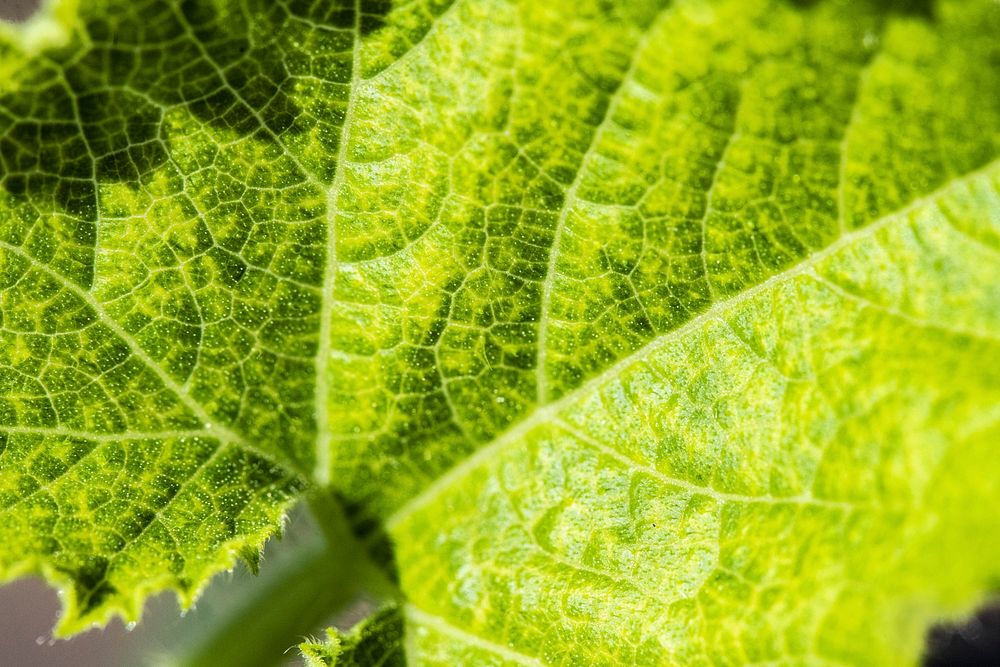
The distinctive yellow veins in a squash plant leaf infected with the Squash vein yellowing virus (SqVYV) is the cause of viral watermelon vine decline; here U.S. Department of Agriculture (USDA) Agricultural Research Service (ARS) scientists from the U.S. Horticultural Research Laboratory, in Fort Pierce, FL are working with F1 K9, a licensed canine detection service company, to train dogs to detect SqVYV; huanglongbing (HLB; a.k.a. citrus greening) in citrus; and tomato chlorotic spot virus (TCSV) in pepper plants at this training session in New Smyrna Beach, FL, on Feb. 25, 2021.
The distinctive yellow veins in a squash plant leaf infected with the Squash vein yellowing virus (SqVYV) is the cause of viral watermelon vine decline; here U.S. Department of Agriculture (USDA) Agricultural Research Service (ARS) scientists from the U.S. Horticultural Research Laboratory, in Fort Pierce, FL are working with F1 K9, a licensed canine detection service company, to train dogs to detect SqVYV; huanglongbing (HLB; a.k.a. citrus greening) in citrus; and tomato chlorotic spot virus (TCSV) in pepper plants at this training session in New Smyrna Beach, FL, on Feb. 25, 2021.
Dogs can be trained to detect specific bacterial or viral pathogens in any part of a plant with greater than 99% accuracy, significantly faster than laboratory tests, and before visible symptoms are obvious. Conventional analysis typically uses only one leaf from a plant. At the early stages of infection, before the disease spreads throughout the plant, a healthy leaf may be taken from an infected plant resulting in a negative laboratory test. In contrast, dogs sample the entire plant while walking by and sniffing it. For more information, please go to ars.usda.gov/news-events/news/research-news/2020/trained-dogs-are-the-most-efficient-way-to-hunt-citrus-industrys-biggest-threat/. USDA Media by Lance Cheung. Original public domain image from Flickr